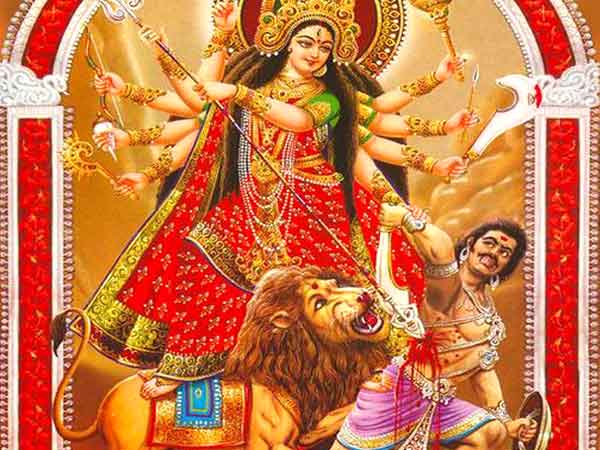A number of legends form the foundation for the celebration of Navratri, every year. Explore the well-known legends of Navaratri festival.
Navratri Legends

|
Navratri is celebrated with fun and religious fervor by Hindus across India. The festival is celebrated twice a year. As per the Gregorian calendar, Chaitra Navratri is celebrated in March-April, while Sharadeya Navratri is celebrated in October-November. Both the celebrations concentrate on the worship of Goddess Shakti. The merrymaking is different in different regions of the country, depending upon which legend the people would follow, for the festival. This clearly shows that Navratri is purely religious, although it involves many fun filled activities like scintillating dance performances (Garba and Dandiya). In the following lines, we have provided the detailed description of the legends of Navratri.
Navaratri Festival Legends
Victory Over Mahishasura
According to a very popular legend, Mahishasura, the mighty demon worshipped Lord Shiva and obtained invincible power. Soon, he started killing the innocent lives on earth and set out to win the seven lokas. He acquired the swarglok. Nobody could save the living creatures from his tyranny. Even the three mighty gods of the Hindu Trinity - Lord Brahma, Lord Vishnu and Lord Shiva - were unable to defeat him. Therefore, all the gods, including the Hindu Trinity, united their supreme powers and created a divine being called Ma Shakti or Durga, the Warrior Goddess.
With all the accumulated power and the weapons given by the gods, Goddess Durga set her trail to defeat Mahishasura. To accomplish the task, she entered a war with him, which extended for nine days. After fighting hard with him for nine days, Goddess Durga killed Mahishasura on the tenth day. Consequently, she lifted the tyranny of the demon off the innocent lives on earth and restored the swarglok to the devatas (Gods). Therefore, Navratri is celebrated to commemorate her victory over the demon, which symbolizes the victory of the good over the evil. The nine nights of Navratri symbolize the nine nights of the war between Goddess Durga and Mahishasura.
Legend of Sati
According to a story in the Hindu mythology, King Daksha of Himalayas was blessed with a beautiful and virtuous daughter, named Uma. She wished to marry Lord Shiva. In order to tie the wedding knot with the god, Uma worshipped him and pleased him. Consequently, Lord Shiva married Uma. One fine day, Uma, now the consort of Lord Shiva, wished to take part in a Yagna conducted by her father. Since her father was not in good terms with him, Lord Shiva refused her to witness the Yagna.
When she turned up at the Yagna, her father - King Daksha - insulted Lord Shiva. Unable to withstand the insult, the angry Uma decided to end her life by jumping into the agni kund. Soon after doing this, she was united with the eternity. Therefore, Uma came to be known as Sati. Sati was reborn again. In the second birth, Sati married Lord Shiva and the divine couple lived happily, thereafter. It is believed that Sati comes to stay with her parents for nine days, every year. This is celebrated as Navratri.
Other Legends
- A story says that in the ancient times, the Kshatriyas abstained from taking part in any warlike activities during the monsoon season. Once the season was over, they made a fresh start with their war activities. Therefore, before their commence their new activities, they would worship different avatars of Ma Durga, the Goddess of Warriors, for nine whole days, which is now celebrated as Navratri.
- A popular legend associated with the celebration of Navratri is the story of Lord Rama, who wanted to rescue his wife Sita, from the demon king- Ravana. To freed her from the clutches of the demon king, Lord Rama worshipped Goddess Durga in her nine different forms, for nine days, so that he gets all the strength and power to kill Ravana. All the nine days became Navratri and hence, celebrated every year. On the tenth day, Rama killed Ravana and that day is called Vijayadashmi or Dussehra.




